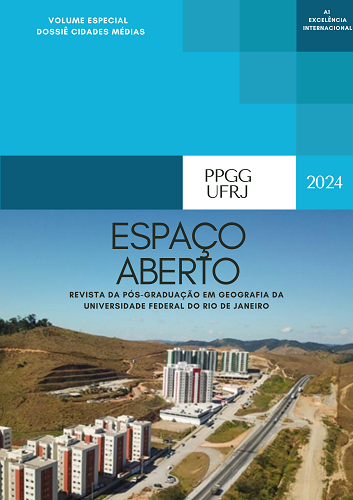Railway and Centrality in Intermediate Cities of Northeastern Brazil: The Structuring and the Formation of the City Center in Caruaru-PE
DOI:
https://doi.org/10.36403/espacoaberto.2024.61220Keywords:
Railway, Central Area, Centrality, Intermediate Cities, Caruaru-PEAbstract
The railway is a technical enhancement that induces changes in the intra-urban scale and the urban network. The railway station, in turn, is a building that shapes urban
morphology and dynamics. The railway line, initially installed outside the city, becomes a margin, a limit, or a barrier to urban expansion. These premises form the basis of this research, which focuses on intermediate Brazilian cities, particularly those known as Bocas de Sertão. This study focuses on the city of Caruaru-PE, located in ortheast
Brazil, which received the railway at the end of the 19th century. Consequently, in the decades from 1940 to 1960, the city experienced greater economic dynamism, favoring the configuration of its central area. Thus, employing documentary research as the main methodological procedure, this study aims to analyze the repercussions of the railway on the structuring of the selected city and, primarily, to scrutinize its importance in the formation of the Central Area.
Metrics
Downloads
Published
How to Cite
Issue
Section
License
Copyright (c) 2024 Doralice Sátyro Maia

This work is licensed under a Creative Commons Attribution-NonCommercial-ShareAlike 4.0 International License.


